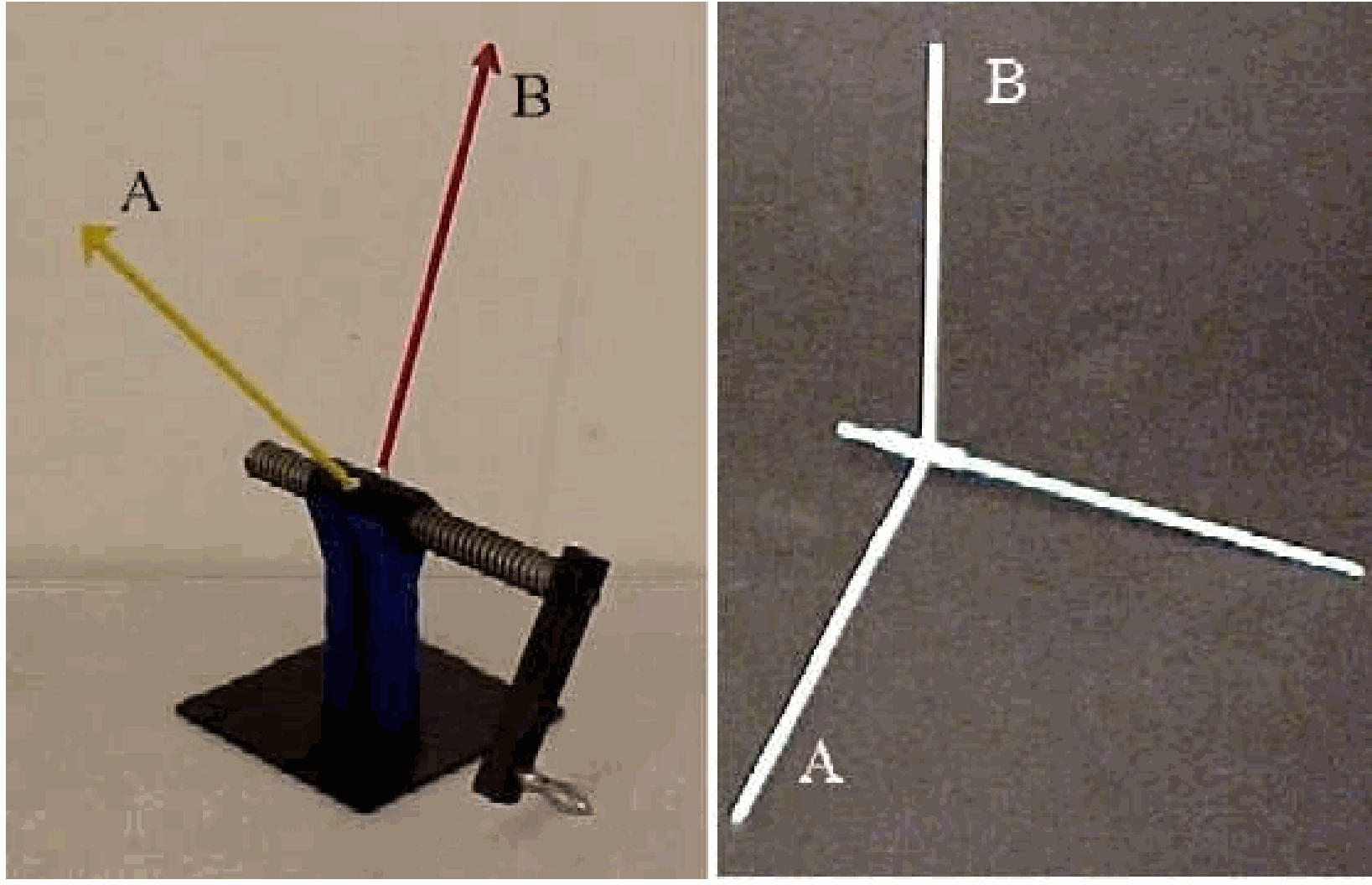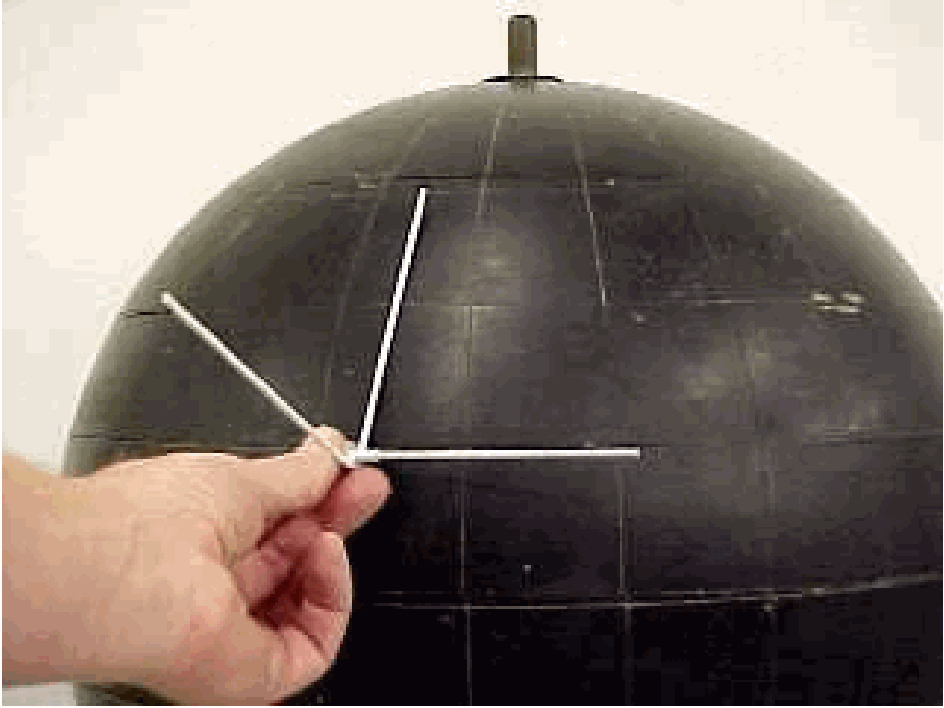01 Cross Product#
Aim#
To visualize the result of a cross product of two vectors.
Subjects#
1A40 (Vectors)
1E30 (Coriolis Effect)
Diagram#

Fig. 6 .#
Equipment#
Screw model.
Right-hand rule model.
Presentation#
Rotate the screw into the direction \(A \rightarrow B\). The screw moves into the direction of the result of the cross product of these two vectors. Rotating the screw in the opposite direction shows that the cross product vector points in the other direction.
The small white model is used in case of explaining Coriolis force in combination with a globe (see Figure 64).

Fig. 7 .#
This model is a handy tool; otherwise, the professor ends up twisting their fingers in all sorts of directions trying to visualise the right-hand rule. In this small model, the resulting vector of the cross product can point one way or another by shifting it through the small tube that is soldered to the fixed vectors \(A\) and \(B\).
Remarks#
For more on dot- and cross products, see the work of our colleagues.
Sources#
Mansfield, M and O’Sullivan, C., Understanding physics, pag. 183 and 733
